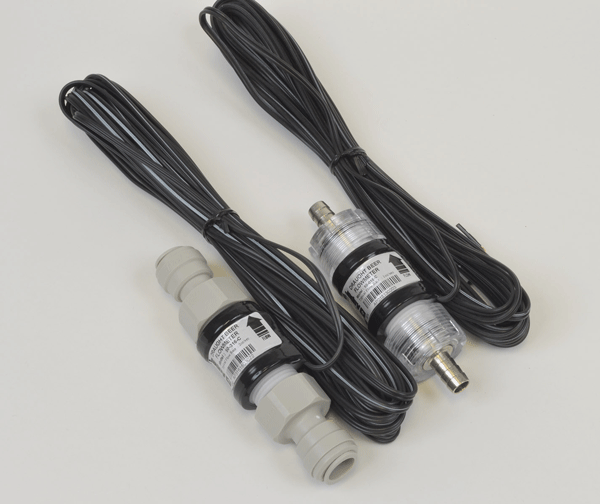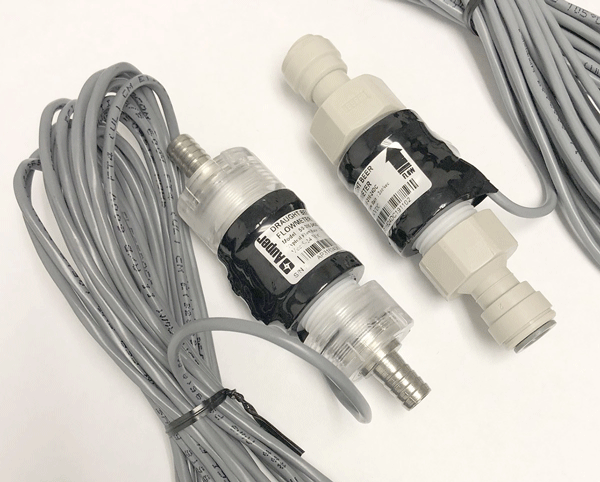
Auper Flow meters
History and description
The Auper draft beer flow meter was designed in the early 1980's, at a time
when Canadian breweries expressed a lot of concern about flow meters
inserted in their customers beer tubing. The flow meters that had been
installed in draft beer tubing until then had been causing disturbance
leading to excessive foaming at the beer tap. To compensate, people
tampered with the beer system settings to reduce the flow, often to half
the normal flow rate to get less disturbance. This was the kind of scrutiny
we were under when we started the project in 1983.
After 2 years of R&D, the end result is a unique low profile propeller that spins in beer without agitating the liquid as other propellers can. The unique design of the assembly eliminates disturbances and cavitations which can agitate the CO2. It makes a big difference with all carbonated beverages. Since 1985, thousands of these flowmeters have been sold and installed in beer systems around the world and they have never been known to cause additional foam in beer, but have always been known for their long service life, stability and precision.
The materials used are not affected by the harsh chemicals used to clean and disinfect the beer tubes. The propeller rotates on a passivated 316 stainless steel shaft with free rotation to reduce friction. The propeller will resist speeding caused by compressed gas. This flow meter will provide many years of reliable service. Maintenance comes down to the normal cleaning schedule for the draft beer dispensing system.
Auper analog flow meter
The original Auper flow meter, the analog flow meter is used on all
Auper metering systems.
Analog flow meters offer distinct advantages:
- Only two wires to connect with no polarities.
- No electronic circuit to feed. It does not require power.
- Will not be damaged if leads are shorted or if it is wired incorrectly.
- Will not be damaged by electrical surges.
An analog flow meter is very resistant. It will last a very long time with little service if any in its life time.
Auper digital flow meter
The digital version of our flow meters is built with a tiny electronic
circuit to convert the analog signal into a square pulse train ready to
connect to third parties electronic digital systems requiring a 5 to 24
volts DC. The square pulses generated are very long when compared
to the very short pulse from Hall effects sensors hitting a small
magnet.
This characteristic helps reduce the scanning frequency of your
electronic system to detect a pulse change.
Auper draft beer flow meters





Products
Information
Videos
Copyright Auper Electronic Controls Inc 2020
